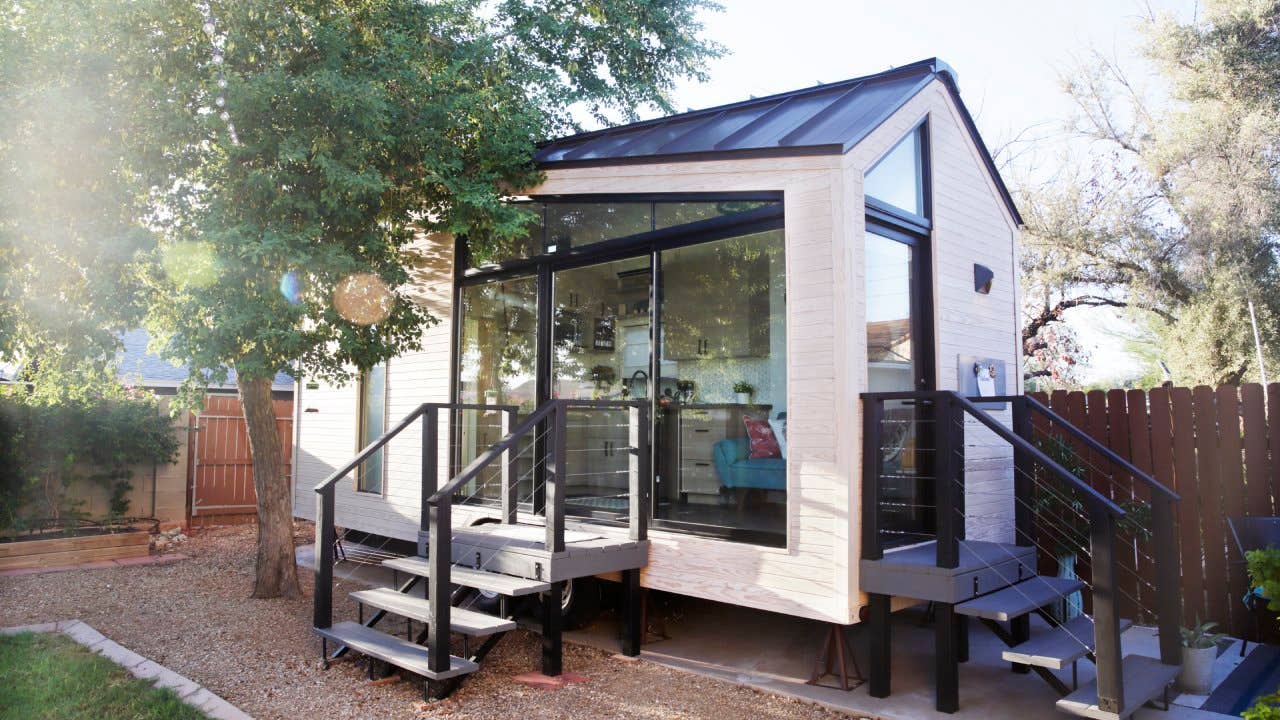5 ways your home can make you money

Your empty backyard could fill up your bank account.
It sounds a little unconventional, but you can generate revenue from your backyard, by building a home on it and then leasing the residence. According to Rent the Backyard, a San Francisco-based firm that specializes in these arrangements, you could make up to $12,000 per year with such a plan. The company, which focuses on the Bay Area, handles all the permitting and construction of the detached dwelling, then splits the rent revenue with you.
Regardless of where you live, there are a variety of ways to make money renting out a portion of your property. You could convert a basement or attic space into an apartment or build a detached unit yourself. This guide will help you turn the parts of your home or lot that you aren’t using into a source of income.
Options for making an income from your property
No matter how you choose to become a landlord, you’ll want to make sure you’re setting aside enough cash to pay income taxes on the rental income (search local listings in your area to get a sense of how much you might charge). You’ll want to make sure you have a written rental agreement and perform a background or credit check on your tenants. Check out local laws, as well as any relevant rules from your mortgage lender or homeowners’ association. You should also check zoning laws to make sure the option you choose is allowed in your area.
Finally, ask your homeowners insurance company if you will need to change your policy to cover a renter. Coverage for any sort of rent-generating property is more expensive than insurance for a home you live in.
Here’s what else you need to know:
Rent out a room
Letting someone stay in an existing bedroom that you’re not using is the quickest way to start earning rental income. Renting a single room in your house is called extreme house hacking — a variation on traditional house hacking, which is renting out units of a multifamily home while also living in one of the units.
Cost: Little to none. As long as you have an extra bedroom, you’re ready to go. But you can charge higher rent by offering a furnished room, says Bill Biko, who runs a landlord education website and has rented out hundreds of bedrooms in investment homes. “Depending on the level of tenants you’re looking for, this could range from a low-end single bed, to queen- or king-sized beds with nicer furniture for higher-paying tenants,” Biko says, adding that you can include a flat-screen TV and other amenities. “It can get costly, but you’ll attract better clients, and they may stay out of your space and in theirs more often.”
Pros: Upfront costs are minimal.
Cons: You’ll face all the issues that come along with living with a roommate and sharing common areas, from privacy concerns to personality conflicts.
Rent out space in your basement or above your garage
Some homes might already have an existing self-sufficient suite — with a bathroom, a small kitchen and separate entrance — attached to the property, but it’s also possible to renovate your home to create one.
Cost: It costs an average of $21,600 for a basement remodel, including a bathroom, according to HomeAdvisor. Construction costs will vary depending on the size of the basement, whether there is existing plumbing, and whether you need to install a separate entrance.
Pros: You’ll have the benefits of renting out a room, without having to share living space, and you could boost the value of your home when you sell. Homeowners who remodeled their basements saw a 70 percent return on investment when selling their home after two years, HomeAdvisor found.
Cons: In addition to the hefty upfront renovation costs, you’ll be responsible for the ongoing maintenance and upkeep of the space.
Build an accessory dwelling unit
They go by many names — a granny pod, a backyard cottage or carriage house — but the official catch-all for them is “accessory dwelling units” or ADUs. While they can be attached extensions to your main house, most people think of them as detached dwellings (this is the type that Rent the Backyard builds). They have separate entrances and kitchen/bathroom facilities but share your address.
You’ll need to have the space to build an ADU on your property and make sure that they’re allowed by local zoning laws and your HOA. There has been a trend toward relaxing regulations in recent years, particularly in dense areas experiencing housing shortages.
Cost: A detached accessory dwelling unit costs $160,000 to $300,000 to build, according to data collected by home renovation loan company RenoFi. This varies by region, though. It can cost more than $350,000 to build an ADU in the Bay Area, for example.
Pros: You can charge more rent for a detached space than one that’s part of your home. You’ll also enjoy more privacy.
Cons: You’ll have to give up part of your yard, and construction can be extensive, including connections to electricity, plumbing and sewage systems. Plus, the upkeep might be more expensive than you think.
Rent your land to a tiny-home owner
Letting someone else bring their tiny home onto your property may seem like a no-brainer, but it could be more complicated than it seems. Typically, tiny homes on wheels are considered RVs, and their occupants are considered campers, and can only stay in one place for 30 to 45 days in many municipalities, says Andrew Helling, a licensed real estate agent in Omaha. For a more permanent arrangement, you might need to attach the house to a foundation on your property, depending on local zoning laws.
Cost: It depends. A simple concrete slab foundation costs on average between $7,000 and $20,000, depending on the size, according to data from HomeAdvisor. You and the tenant need to work out who pays for the cost of building the foundation and securing the house. Beyond that, the costs are minimal, although many tiny houses require utility hookups.
Pros: You can get the revenue from a tenant without the costs of constructing and maintaining a new building.
Cons: It’s harder to evict someone from a house that they own if they stop paying rent. “There needs to be a solid legal agreement as to who’s responsible for what if something goes wrong,” Helling says. “They’re attaching something to your property that you don’t own. That’s a big consideration.”
Join the Airbnb community
Rather than go through the process of getting a tenant to live on your property, you can let your home serve as a place to stay for travelers and short-term residents by listing a room or property on Airbnb. According to the company, the average host makes about $13,800 per year.
Cost: If you are renting out a room or property that you already own on Airbnb, the startup cost can be incredibly cheap — basically just the cost of cleaning supplies to get the room ready. If you are building or buying a property to list on Airbnb, it could cost considerably more.
Pros: There is a low cost of entry to list on Airbnb, and it provides more flexibility as you can choose when your listing is available. You also set the pricing, which gives you a lot of control over the process.
Cons: Additional insurance may be required to cover your listing. If you have a homeowners association, they may have restrictive rules that prevent you from listing a room or property on Airbnb. Likewise, some municipalities have rules restricting Airbnbs.
Bottom line on earning income from your property
As long as you have the space, you can bring in extra income by renting out part of your property. It’s important to consider the pros and cons of each strategy, along with the potential costs, as well as zoning laws and homeowners association rules, before signing any lease agreements.
You might also want to seek the advice of a real estate attorney or property management company for guidance on how to become a landlord, drawing up an ironclad lease agreement and screening potential tenants. Don’t forget your homeowners’ insurance company, either: You may need to alter your policy, or even get a new landlords insurance policy, to make sure you are properly covered.
You may also like

7 ways to make extra income in retirement

8 ways to increase your home’s value




